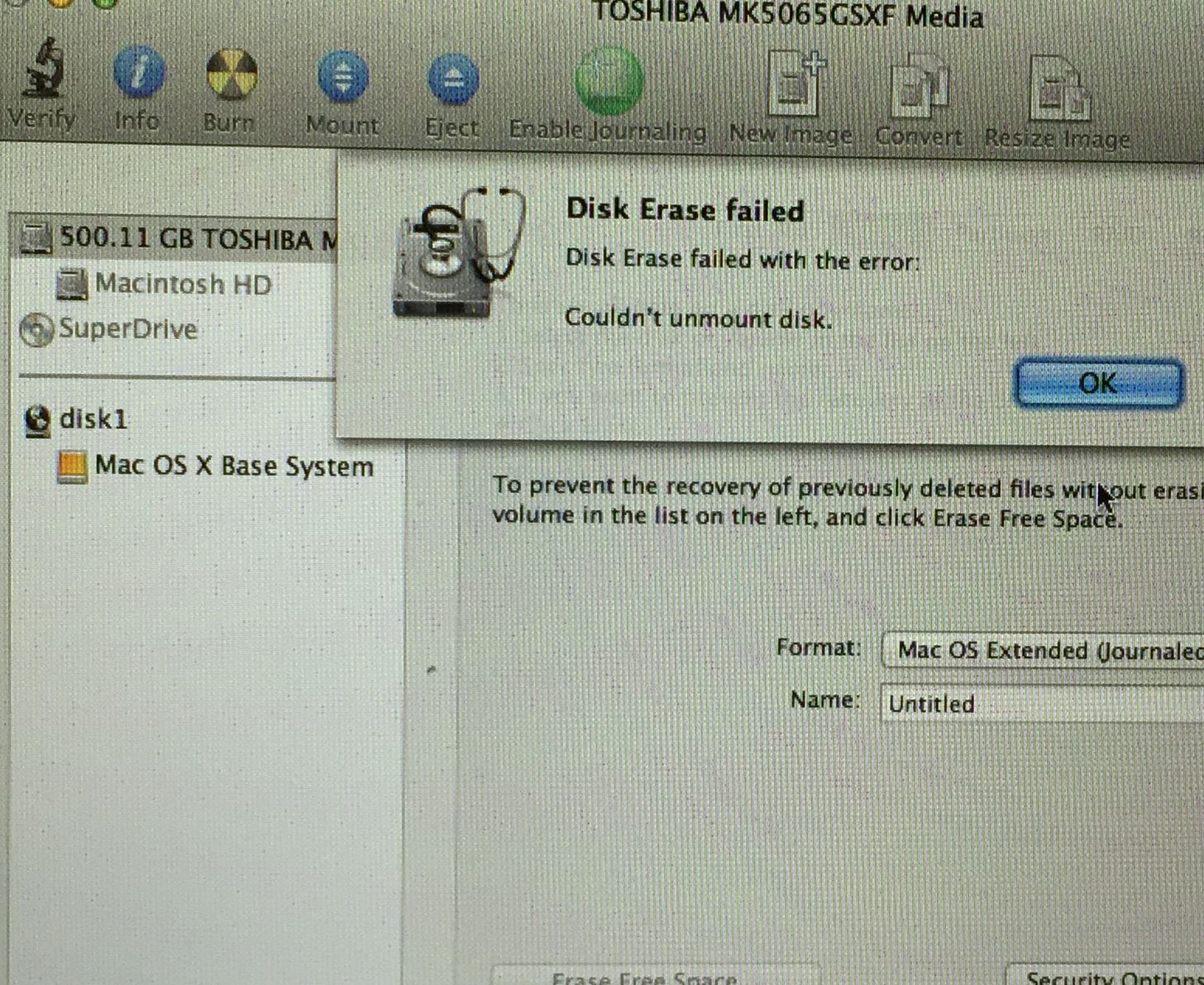

- Unmount disk failed on older macbook pro mac os x#
- Unmount disk failed on older macbook pro 720p#
- Unmount disk failed on older macbook pro install#
- Unmount disk failed on older macbook pro update#
This entry was posted in Linux on by pommi. The funny thing is that elementary OS is snappier then OS X on this MacBook.
Unmount disk failed on older macbook pro update#
Put the desired configuration in /etc/crypttab and update the initial RAMdisk. To make the initial RAMdisk (/boot/initrd.img) aware that /dev/sda3 is an encrypted partition. Copy a grub.mo file to /boot/grub/locale/en.mo and run grub-mkconfig to generate the grub configuration.
Unmount disk failed on older macbook pro install#
Install grub-efi-ia32 and run grub-install. Mount the required partitions and chroot into the new elementary OS installation. Now we have to fix the bootloader manually. After that the installation from the wizard is complete.

Now run through the installer once again. You’ll see it also created some device symlinks in /dev/mapper. We’ll create a 10GB root partition, 4GB swap partition and the rest is for the home partition. Now execute the pvcreate, vgcreate and lvcreate commands.

As you can see /dev/sda3 is encrypted and referred to as /dev/mapper/sda3_crypt. This is not possible to configure this via the installer. We just quit the installer, because we want to create 3 partitions in the encrypted sda3_crypt for the root partition (/), swap partition and home partition (/home) using LVM2. Change this partition and configure it to not format it. The installer tries to be smart now, by marking sda3_crypt to be formatted as ext4.
Unmount disk failed on older macbook pro mac os x#
Unmount disk failed on older macbook pro 720p#
What always frustrated me a bit is that this MacBook wasn’t 100% capable to show 720p YouTube videos. Now almost all videos are available in >720p format. At the same time YouTube started (2008) offering 720p HD videos. I also upgraded OS X to 10.5 Leopard, 10.6 Snow Leopard and in the end to 10.7 Lion. Along the way I upgraded it to 2GB RAM and gave it a fantastic boost by replacing the HDD by an Intel 320 Series SSD. In January 2007 I bought my first OS X device, a white 13.3-inch MacBook, running OS X 10.4 Tiger on a 2.0Ghz Intel Core 2 Duo processor, having 1GB of RAM.


 0 kommentar(er)
0 kommentar(er)
